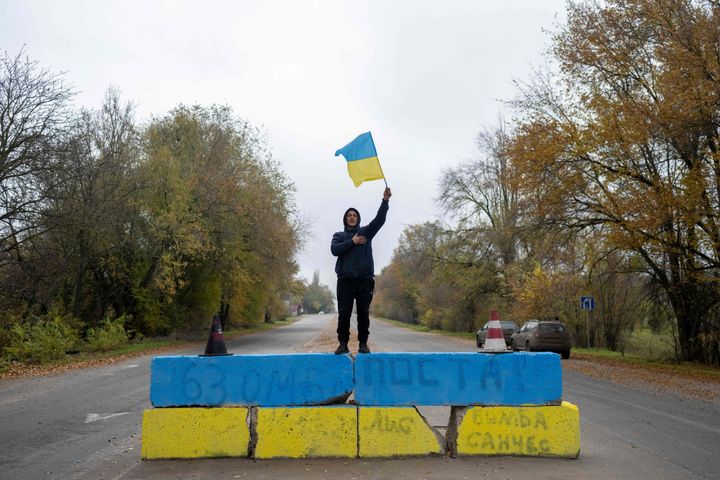
Kherson has just been liberated after the Kremlin ordered the withdrawal of all Russian troops from the southern Ukrainian city.
Ukrainians have understandably been jubilant, particularly as the city – captured by Moscow early in the war – was the only regional capital occupied by Russian troops.
Moscow had even declared the city as its own territory after holding a sham referendum back in September, saying the annexation of Kherson was “non-negotiable”.
It was one of four regions Russia claimed as its own but Ukraine has been successfully making gains in the south of the country in recent weeks. Then on Thursday, Russia finally announced it was pulling its troops out due to supposed supply chain issues.
Ukraine subsequently reclaimed the regional capital on Friday, as locals reunited with friends and family after months apart.
However, the city is not in the clear yet – and the war is far from over.
1. Russian forces are still close
The BBC’s Jeremy Bowen pointed out that Kherson’s residents could still hear distant explosions from the edge of the city.
He suggested this was likely to be both Ukrainian engineers blowing up traps left by Russians and ongoing shelling – implying the danger to Kherson is not over yet.
He also noted that the occupants of the liberated city still appeared to feel a sense of “trepidation” over what happens next.
It’s worth remembering that Russian troops are still in Ukraine, including in the Kherson region – just on the other side of the Dnipro River, away from the regional capital.
2. Kherson has been weakened
Ukraine needs to consolidate its recent gains around the city to strengthen its hold on Kherson. It will also need to urgently restore the damaged utilities, the power supply and the infrastructure including the rail bridges and roads which connected the city to the other side of the Dnipro River.
These broken structures mean Russia cannot easily return to Kherson city, but it also buys its troops some time away from the pressure of Ukraine’s counteroffensive.
Part of the Nova Kakhovka dam has been blown up too, further straining power within the city.
3. Is Zaporizhzhia next?
The Antonivsky bridge and the Nova Kakhovka dam, both now damaged, were the only ways to cross the Dnipro bridge south of Zaporizhzhia.
The site of Europe’s largest nuclear plant, Zaporizhzhia has been occupied by Russia for months, amid significant fears that having a nuclear station on the frontline could have catastrophic consequences.
Now the other means of reaching the rest of Russia-controlled Ukraine have been destroyed, Kyiv is expected to move its forces towards Zaporizhzhia – which could spell even more bloodshed on both sides.
4. Russia denies surrender
Dmitry Peskov, the spokesperson for Russian president Vladimir Putin, denied that the withdrawal was a sign of humiliation or defeat – and said Kherson was still “part of Russia”.
He also claimed that Russia remains committed to achieving the goals of its so-called “special military operation” in Ukraine.
5. Time to be cautious
Ukrainian president Volodymyr Zelenskyy urged the population to be “restrained” when news first broke that Russia was withdrawing from Kherson.
He said: “You need to understand: no one just gets away if they don’t feel the strength.
“The enemy does not bring us gifts, does not make ‘gestures of goodwill’. We fight out way up.”
The former head of the British Army, Lord Dannatt, also warned last week that Kherson should be watched “very carefully”. He said the withdrawal may stem from a desire to regroup, or it could be a trap to encourage the Ukrainians to advance.
He added that the Russians are “masters of deception and camouflage”.
6. US officials’ warning
The US’s top military officer, General Mark Milley, started calling for “diplomatic solutions” to the war last week, to consolidate on Ukraine’s advances.
He said the Ukrainians had only pushed their opponents to a “standstill”, and that “what the future holds is not known with any degree of certainty.
However, the White House did then itself from the suggestion that it was calling for Ukraine to let Russia claim Ukrainian land.
Still, US national security adviser Jake Sullivan explained that it was a precarious position for Ukraine on Friday, explaining: “If Ukraine chose to stop fighting and give up, it would be the end of Ukraine.”
